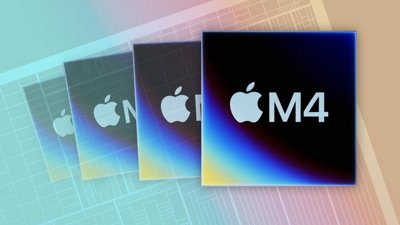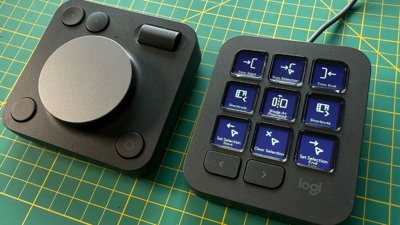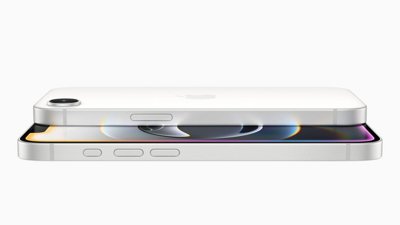Intel sent out early versions of the chips to numerous Web sites where they have been tested and benchmarked. Across the board, the results were said to be positive. PC Magazine pitted a new 2.53GHz Intel Core i5-540M from ASUS against a 2.53GHz Intel Core 2 Duo P9500, as well as a 2GHz Intel Core i7-920XM.
"We've seen incremental bumps in speeds (percentages in the teens) when Intel launches new processors for the same platform, but when you swap out an entire motherboard and everything that goes with it, the change can be quite significant," they said. "Cinebench R10 is a multi-threaded benchmark test that took full advantage of the Core i5-540M's HyperThreading technology, beating the T400s's similarly clocked Core 2 Duo P9500 CPU by a 62% margin."
The Arrandale mobile processors were released alongside their Clarkdale counterparts. The two chips share the same architecture, which employs a 32nm Westmere core paired with a 45nm chipset. The new 32nm chips offer improved speed, better graphics performance and lower power consumption. They will also allow motherboards to become smaller.
Tom's Hardware found that the new processors strike a good balance between speed found on desktop machines, with power consumption low enough to support a mobile device. But those gains, in early tests, come without the inclusion of a discrete graphics card.
In a test of ripping CDs to the AAC format within iTunes, the new Arrandale mobile processor performed the task 10 seconds better than its Penryn predecessor, clocking in at 1:36 on the task.
The site found that the 35W Core i5-540M uses more power under load, but uses quite a bit less power than the Core 2 Duo P8700 during downtime. Average power consumption was said to be 32.9W for the Arrandale and 31.7W for Penryn.
"So long, Core 2 Duo," the site's review concluded. "The wheels of progress keep on spinning, and Arrandale is playing you out."
Further reviews are available from Hot Hardware, AnandTech, PC Perspective, and Legit Reviews.
The new processors are set to improve upon the previous line of Intel's Core 2 Duo chips, which have been utilized in versions of Apple's new MacBook, MacBook Pro, and iMac. Apple uses the mobile variants of Intel's desktop chips for those systems, meaning machines with chips based on the Arrandale architecture could arrive soon.
Unlike the Core 2 Duo CPUs, Arrandale processors will have the major northbridge chipset memory controller components built in. Currently, Apple uses Nvidia chipsets with its Mac lineup. But the architectural changes through Arrandale — along with an ongoing lawsuit that has forced Nvidia to halt the development of future chipsets — would likely make it difficult for Apple to continue with Nvidia.
Apple last updated its MacBook Pro line in June at the Worldwide Developers Conference. Those systems included Core 2 Duo processors and Nvidia graphics, along with cheaper prices, better displays and built-in batteries. Intel intends to release 17 new CPUs in early 2010, which will be highlighted at this week's CES.
 Sam Oliver
Sam Oliver









-m.jpg)






 Wesley Hilliard
Wesley Hilliard
 Christine McKee
Christine McKee
 Malcolm Owen
Malcolm Owen
 William Gallagher
William Gallagher
 Andrew Orr
Andrew Orr






-m.jpg)




61 Comments
broadcom just released a $2 chip called crystalHD that can play back HD content very nicely. HP is going to release $300 netbooks with it tomorrow. not sure if they will have blu ray in them, but they will have the power to decode it
Intel's new "Arrandale" dual-core processors …have been found to have better performance than their Core 2 Duo predecessors without negative impact on battery life.
This is curious. PCMag and Tom's Hardware appear to have tested the same i5 processor, but PCMag noted a much worse impact on battery life:
Battery Life
Processor and graphics power came in well above expectations, but battery life is currently the biggest question mark. It's difficult to pass a verdict given that we have a single test unit, and especially when the low voltage and ultra low voltage Core i7s and Core i5s have yet to show up on our test benches. From initial testing, though, the Core i5-equipped K42F was less than impressive, scoring just 3 hours 35 minutes with its 63Wh battery in MobileMark 2007 tests. The T400s, with its Core 2 Duo P9500, scored almost an hour better (4:31) despite using a much smaller battery (43Wh). We will take a more definitive stance once we have more review systems.
They don't detail their test, so I guess it must have been quite CPU-intensive.
These chips look very interesting. Let's see what Apple chooses to announce regarding using these chips or not...
This is curious. PCMag and Tom's Hardware appear to have tested the same i5 processor, but PCMag noted a much worse impact on battery life:
Interesting. Doesn't anybody give credit anymore?
I did see
Battery Life
Processor and graphics power came in well above expectations, but battery life is currently the biggest question mark. It's difficult to pass a verdict given that we have a single test unit, and especially when the low voltage and ultra low voltage Core i7s and Core i5s have yet to show up on our test benches. From initial testing, though, the Core i5-equipped K42F was less than impressive, scoring just 3 hours 35 minutes with its 63Wh battery in MobileMark 2007 tests. The T400s, with its Core 2 Duo P9500, scored almost an hour better (4:31) despite using a much smaller battery (43Wh). We will take a more definitive stance once we have more review systems.
but also verbatimon a blogger's post? i.e.,
Performance Gains, Sometimes - My KTVU Blog post* http://my.ktvu.com/_Performance-Gain...0714/6704.html.
The bad thing about these are the bundled GPU's. If these come bundled with Intel integrated graphics, it will be poison from the get go.